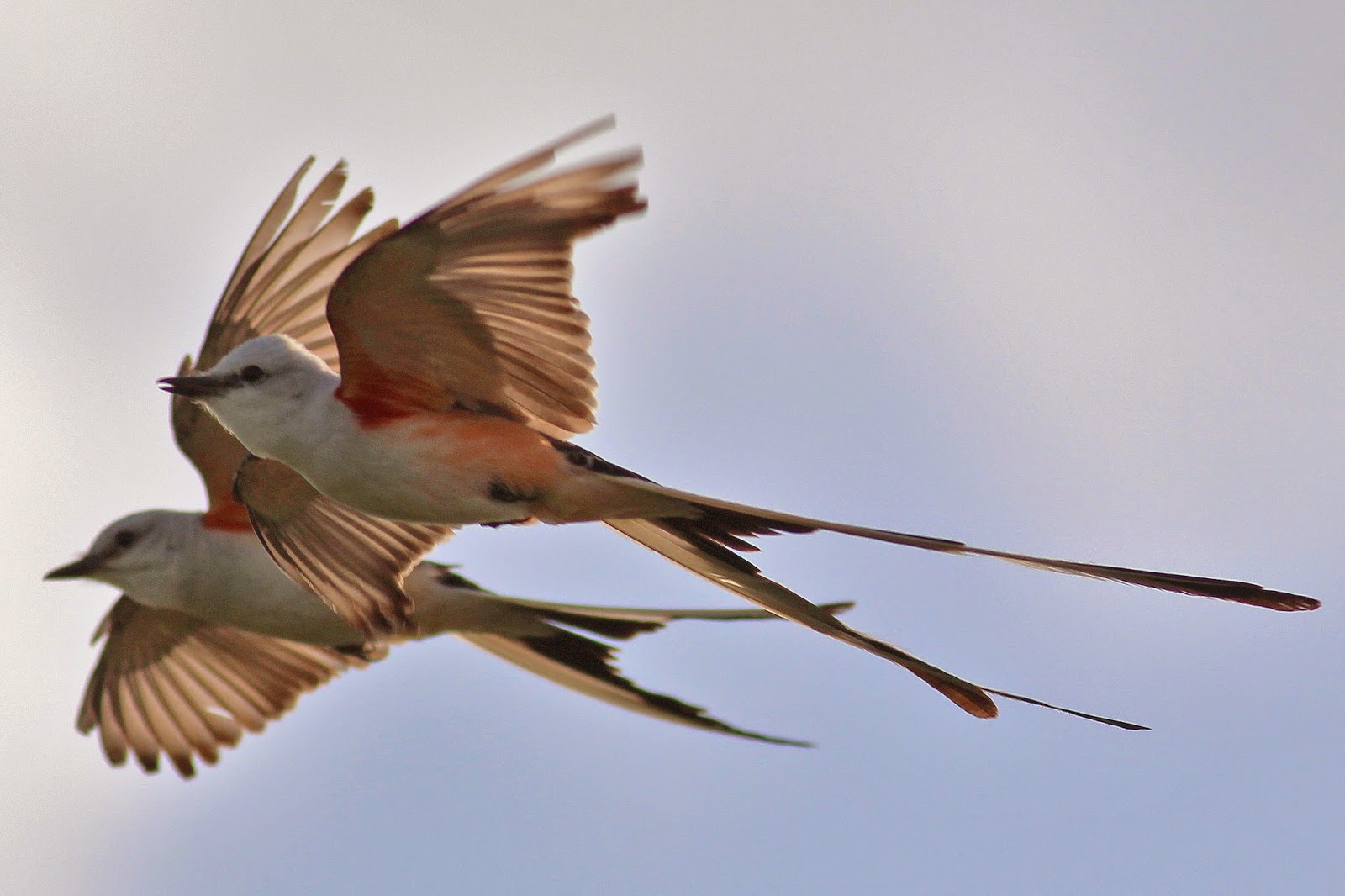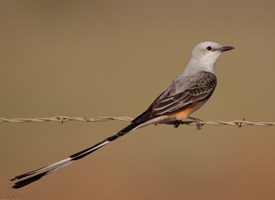
Tyrannus forficata
SUBFAMILY
Tyranninae
TAXONOMY
Muscicapa forficatus Gmelin, 1789, Mexico. Monotypic.
OTHER COMMON NAMES
French: Tyran а longe queue; German: Scherentyrann; Spanish:
Pitirre Tijereta.
PHYSICAL CHARACTERISTICS
11.5–15 in (29–38 cm); half of which is tail. Characterized by a
long tail that opens and closes like a pair of scissors. Plumage
includes pale gray upperparts, a pale gray head, white throat
and underparts, pale salmon-pink sides and flanks, and dark
brown wings with white edges. Bill, legs, and feet are black.
Sexes are similar; juveniles are paler overall. Weight is 1.5 oz
(42 g).
DISTRIBUTION
Oklahoma, Texas, limited surrounding areas in neighboring
U.S. states, and far northern Mexico. Accidental across much
of North America. Winters in southern Mexico and Central
America.
HABITAT
Inhabits open land with scattered trees, prairies, scrublands,
and farmlands.
BEHAVIOR
Lives singly or in pairs during the day, roosts at night in groups
of up to 200. Capable of acrobatic flight. During courtship, the
male makes a sudden plunge from a hundred feet (30 m) above
ground, flies downward and diagonally back and forth singing
with a cackle, and proceeds to an upward flight followed by several
backward somersaults. This display persists through
courtship and nesting until the eggs hatch. Main vocalization is
a sharp “bik!” or “kew!”; other calls include a chattering “kaquee-
ka-quee!” and a repeated string of “ka-lup!”.
FEEDING ECOLOGY AND DIET
From a main perch on branches, utility wires, and fences,
watches for bees, wasps, and other flying insects, and then sallies
forth, hovering momentarily over prey and dipping to
catch it. Returns to same perch. Also hunts near the ground
for crickets and grasshoppers.
REPRODUCTIVE BIOLOGY
Breeds monogamously once per year; female builds nest and
incubates a clutch of three to six eggs for 14 to 17 days. Nest
is cup-shaped and built on either deciduous or coniferous
branches, on shrubs, and in human-made structures. Young are
fed by both parents and remain in nest for 14 to 16 days.
CONSERVATION STATUS
Not threatened. Rarely hosts cowbird parasitism.
SIGNIFICANCE TO HUMANS
None known, other than interest in viewing the spectacular
flight display of the courting male.
Other popular Animals
Photo Gallery of - Scissor-tailed flycatcher




 Animalia Life
Animalia Life